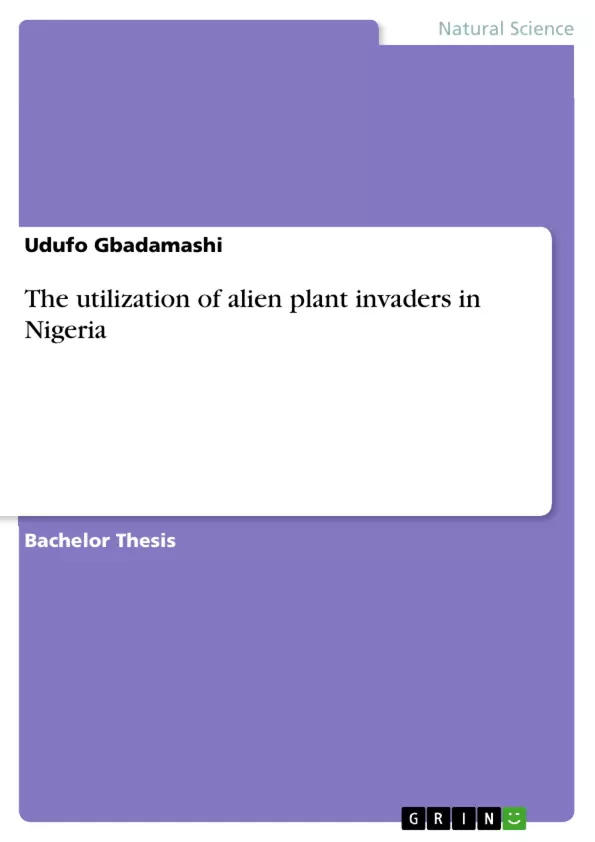This study reviews the utilization of alien plant invaders in Nigeria, with a view to recommending these plants to Nigerians considering their utilization potential. The overall aim of this research project is reflected in the following research questions: How does educational awareness have impact on the utilization of plant invaders? What was the utilization of alien plants invasions? How does climate change and variability aid the invasion of alien species? How do alien plant invaders affect the economic, recreational and environmental uses?
Invasive alien species have been introduced to Nigeria from different parts of the world both intentionally and unintentionally and they are affecting indigenous plants and animal communities. The intentional spread has been a result of ongoing and increasing human redistribution of species to support agriculture, forestry, mariculture, horticulture and recreation. This supplies a continuous pool of species from which invasive aliens are recruited.
The invasive alien species were also introduced as commercial plants or ornamental garden plants. Invasions also occurred countrywide as a result of seed introductions, of tree and shrub clearing for pasture and grazing infestations. The unintentional introductions of IAPs include disease organisms, agricultural weeds and insect pests. However, they were broughtwithout their natural enemies, which results in these plants reproducing copiously.
Inhaltsverzeichnis (Table of Contents)
- CHAPTER ONE
- Introduction
- Background to the Study
- Statement of the Problem
- Purpose of the Study
- Significance of the Study
- Description of the Study Area
- CHAPTER TWO
- Literature Review
- Range and Scale of Impacts
- Pathways for Introduction and Spread
- Removal or Eradication of Invasive Plants
- Factors Conferring Invasiveness
- Geographical Range and Impact of the Problem in Nigeria
- Reproduction of the Alien Plant Invader
- Environmental Problem caused by Alien Plant Invader
Zielsetzung und Themenschwerpunkte (Objectives and Key Themes)
This research project aims to explore the utilization of alien plant invaders in Nigeria and recommend their potential applications to Nigerians. It examines the various benefits these plants offer, considering their potential in diverse fields such as medicine, biogas production, and environmental remediation.
- Utilization of Alien Plant Invaders in Nigeria
- Potential Applications of Alien Plant Invaders
- Control Measures for Alien Plant Invaders
- Environmental and Economic Impacts of Alien Plant Invaders
- Benefits of Utilizing Alien Plant Invaders
Zusammenfassung der Kapitel (Chapter Summaries)
Chapter One introduces the research topic, providing background information on alien plant invaders in Nigeria. It outlines the research problem, its significance, and the study area. Chapter Two delves into a comprehensive literature review, exploring the impacts of alien plant invaders, pathways for their introduction and spread, removal or eradication methods, factors contributing to their invasiveness, their geographical range and impact in Nigeria, their reproductive strategies, and the environmental problems they cause.
Schlüsselwörter (Keywords)
Alien plant invaders, Nigeria, utilization, potential applications, control measures, environmental impact, economic benefits, invasive species, biological control, mechanical control, chemical control.
- Quote paper
- Udufo Gbadamashi (Author), 2019, The utilization of alien plant invaders in Nigeria, Munich, GRIN Verlag, https://www.grin.com/document/468696



